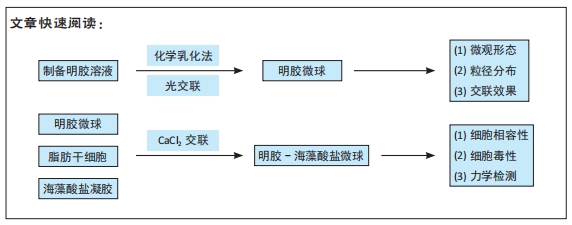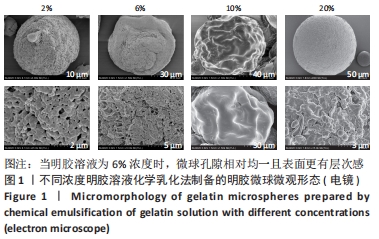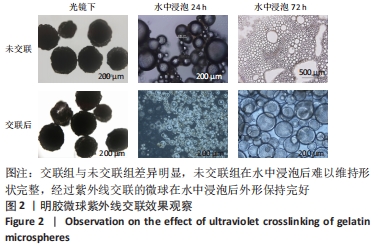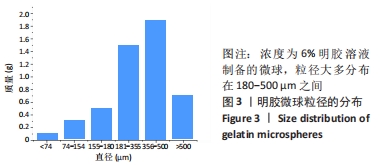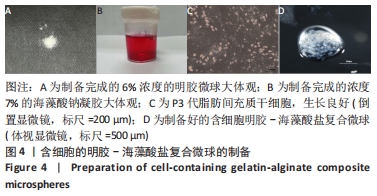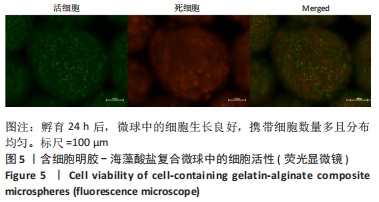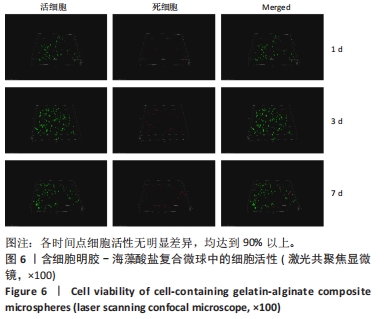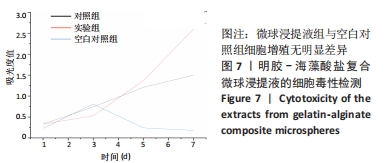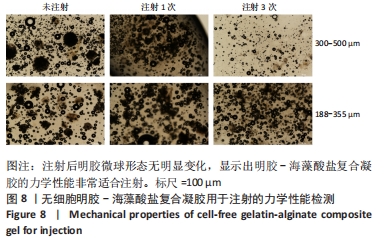[1] KAISER LR. The future of multihospital systems. Top Health Care Financ. 1992; 18(4):32-45.
[2] ZHENG Y, HONG X, WANG J, et al. 2D Nanomaterials for Tissue Engineering and Regenerative Nanomedicines: Recent Advances and Future Challenges. Adv Healthc Mater. 2021;10(7):e2001743.
[3] ALDANA AA, ABRAHAM GA. Current advances in electrospun gelatin-based scaffolds for tissue engineering applications. Int J Pharm. 2017;523(2):441-453.
[4] FARRUGIA CA, GROVES MJ. Gelatin behaviour in dilute aqueous solution: designing a nanoparticulate formulation. J Pharm Pharmacol. 1999;51(6):643-649.
[5] SULAIMAN SB, IDRUS RBH, HWEI NM. Gelatin Microsphere for Cartilage Tissue Engineering: Current and Future Strategies. Polymers(Basel). 2020;12(10):2404.
[6] WACHSMUTH L, SÖDER S, FAN Z, et al. Immunolocalization of matrix proteins in different human cartilage subtypes. Histol Histopathol. 2006;21(5):477-485.
[7] KRISHNAN Y, GRODZINSKY AJ. Cartilage diseases. Matrix Biol. 2018;71-72:51-69.
[8] LE CAIGNEC C, ORY B, LAMOUREUX F, et al. RPL13 Variants Cause Spondyloepimetaphyseal Dysplasia with Severe Short Stature. Am J Hum Genet. 2019;105(5):1040-1047.
[9] ZHU HK, YANG L, FANG XF, et al. Effects of intermittent radio frequency drying on structure and gelatinization properties of native potato flour. Food Res Int. 2021; 139:109807.
[10] Bittner SM, Pearce HA, Hogan KJ, et al. Swelling behaviors of 3D printed hydrogel and hydrogel-microcarrier composite scaffolds. Tissue Eng Part A. 2021.doi: 10.1089/ten.TEA.2020.0377.
[11] ZHANG X, DAI K, LIU C, et al. Berberine-Coated Biomimetic Composite Microspheres for Simultaneously Hemostatic and Antibacterial Performance. Polymers (Basel). 2021;13(3):360.
[12] TANAKA N, TAKINO S, UTSUMI I. A new oral gelatinized sustained-release dosage form. J Pharm Sci. 1963;52:664-667.
[13] ZHANG S, KANG L, HU S, et al. Carboxymethyl chitosan microspheres loaded hyaluronic acid/gelatin hydrogels for controlled drug delivery and the treatment of inflammatory bowel disease. Int J Biol Macromol. 2021;167:1598-1612.
[14] WOLKOW N, JAKOBIEC FA, YOON MK. Gelatin-Based Hemostatic Agents: Histopathologic Differences. Ophthalmic Plast Reconstr Surg. 2018;34(5):452-455.
[15] DEWAN I, ISLAM MM, AL-HASAN M, et al. Surface Deposition and Coalescence and Coacervation Phase Separation Methods: In Vitro Study and Compatibility Analysis of Eudragit RS30D, Eudragit RL30D, and Carbopol-PLA Loaded Metronidazole Microspheres. J Pharm (Cairo). 2015; 2015:254930.
[16] BASU SK, KAVITHA K, RUPESHKUMAR M. Evaluation of ketorolac tromethamine microspheres by chitosan/gelatin B complex coacervation. Sci Pharm. 2010; 78(1):79-92.
[17] HEINEMANN C, HEINEMANN S, KRUPPKE B, et al. Electric field-assisted formation of organically modified hydroxyapatite (ormoHAP) spheres in carboxymethylated gelatin gels. Acta Biomater. 2016;44:135-143.
[18] CHOY YB, CHENG F, CHOI H, et al. Monodisperse gelatin microspheres as a drug delivery vehicle: release profile and effect of crosslinking density. Macromol Biosci. 2008;8(8):758-765.
[19] CI Y, WANG L, GUO Y, et al. Study on encapsulation of chlorine dioxide in gelatin microsphere for reducing release rate. Int J Clin Exp Med. 2015;8(8):12404-12410.
[20] NAKAS A, DALATSI AM, KAPOURANI A, et al. Quality Risk Management and Quality by Design for the Development of Diclofenac Sodium Intra-articular Gelatin Microspheres. AAPS PharmSciTech. 2020;21(4):127.
[21] YUAN L, LI X, GE L, et al. Emulsion Template Method for the Fabrication of Gelatin-Based Scaffold with a Controllable Pore Structure. ACS Appl Mater Interfaces. 2019;11(1):269-277.
[22] YIN F, CAI J, ZEN W, et al. Cartilage Regeneration of Adipose-Derived Stem Cells in the TGF-β1-Immobilized PLGA-Gelatin Scaffold. Stem Cell Rev Rep. 2015;11(3): 453-459.
[23] FREED LE, MARQUIS JC, NOHRIA A, et al. Neocartilage formation in vitro and in vivo using cells cultured on synthetic biodegradable polymers. J Biomed Mater Res. 1993;27(1):11-23.
[24] SARIKA PR, JAMES NR. Polyelectrolyte complex nanoparticles from cationised gelatin and sodium alginate for curcumin delivery. Carbohydr Polym. 2016;148: 354-361.
[25] SONG W, SU X, GREGORY DA, et al. Magnetic Alginate/Chitosan Nanoparticles for Targeted Delivery of Curcumin into Human Breast Cancer Cells. Nanomaterials (Basel). 2018;8(11):907.
[26] DARINI A, ESLAMINEJAD T, NEMATOLLAHI MAHANI SN, et al. Magnetogel Nanospheres Composed of Cisplatin-Loaded Alginate/B-Cyclodextrin as Controlled Release Drug Delivery. Adv Pharm Bull. 2019;9(4):571-577.
[27] DOUZANDEH-MOBARREZ B, ANSARI-DOGAHEH M, ESLAMINEJAD T, et al. Preparation and Evaluation of the Antibacterial Effect of Magnetic Nanoparticles Containing Gentamicin: A Preliminary In vitro Study. Iran J Biotechnol. 2018; 16(4):e1559.
[28] AFZALI E, ESLAMINEJAD T, YAZDI ROUHOLAMINI SE, et al. Cytotoxicity Effects of Curcumin Loaded on Chitosan Alginate Nanospheres on the KMBC-10 Spheroids Cell Line. Int J Nanomedicine. 2021;16:579-589.
[29] YANG IH, CHEN YS, LI JJ, et al. The development of laminin-alginate microspheres encapsulated with Ginsenoside Rg1 and ADSCs for breast reconstruction after lumpectomy. Bioact Mater. 2021;6(6):1699-1710.
[30] BROWN KE, LEONG K, HUANG CH, et al. Gelatin/chondroitin 6-sulfate microspheres for the delivery of therapeutic proteins to the joint. Arthritis Rheum. 1998;41(12):2185-2195.
[31] TØNNESEN HH, KARLSEN J. Alginate in drug delivery systems. Drug Dev Ind Pharm. 2002; 28(6): 621-630.
[32] WHITEMAN KR, SUBR V, ULBRICH K, et al. Poly(Hpma)-coated liposomes demonstrate prolonged circulation in mice. J Liposome Res. 2001;11(2-3):153-164.
[33] PICARD F, DEAKIN A, BALASUBRAMANIAN N, et al. Minimally invasive total knee replacement: techniques and results. Eur J Orthop Surg Traumatol. 2018; 28(5):781-791.
[34] RUDNIK-JANSEN I, SCHRIJVER K, WOIKE N, et al. Intra-articular injection of triamcinolone acetonide releasing biomaterial microspheres inhibits pain and inflammation in an acute arthritis model. Drug Deliv. 2019;26(1):226-236.
[35] KO IK, KEAN TJ, DENNIS JE. Targeting mesenchymal stem cells to activated endothelial cells. Biomaterials. 2009;30(22):3702-3710.
[36] YANG J, ZHOU M, LI W, et al. Preparation and Evaluation of Sustained Release Platelet-Rich Plasma-Loaded Gelatin Microspheres Using an Emulsion Method. ACS Omega. 2020;5(42):27113-27118.
[37] CHEN X, FAN M, TAN H, et al. Magnetic and self-healing chitosan-alginate hydrogel encapsulated gelatin microspheres via covalent cross-linking for drug delivery. Mater Sci Eng C Mater Biol Appl. 2019;101:619-629.
|
